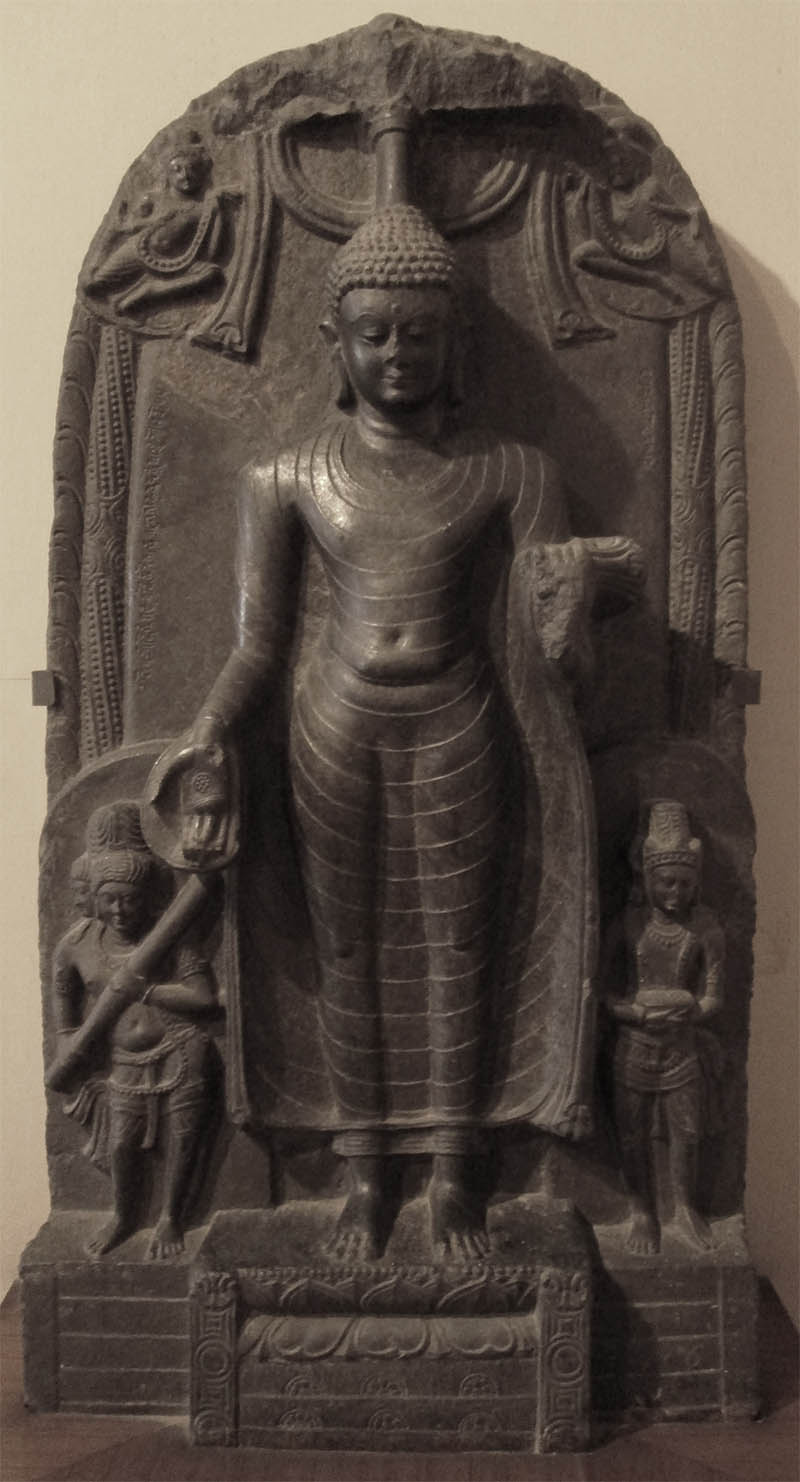A Sculpture Buddha Descending from Heaven, circa 10th century, Kurkihar Style
Deep within the Bihar Museum in Patna, a hidden gallery houses a collection of mesmerizing bronze sculptures depicting Buddha and Bodhisattvas. Ranging from tiny few-centimeter statues to towering 5-foot creations, each sculpture is a testament to the artistic mastery of its creator. The play of light on the aged bronze sculptures, crafted through the lost-wax process, creates an almost ethereal effect, making them glow with life.
A unique feature of the Kurkihar bronzes is their ability to retain their original vibrant hues, even after a millennium. A ninth-century CE statue of a standing Buddha adorned with the varada mudra stands as a brilliant example, its robe adorned with a rich array of colors achieved through masterful metal blending techniques.
Scholars now believe that during the reign of the Buddhist Pala emperors of Bengal and Bihar (750-1170 CE), artisans within ateliers attached to Buddhist establishments played a pivotal role in meeting the iconographic needs of a resurgent and international Buddhism. These ateliers, often linked to large monasteries, developed distinctive styles that influenced each other and spread their influence across South Asia and beyond.
Among these ateliers, Kurkihar emerges as a unique site with its distinct style. Art historian Susan L. Huntington's 1984 book, "The 'Pala-Sena' Schools Of Sculpture," highlighted Kurkihar as an atelier separate from its neighbors at Nalanda or Bodh Gaya. The Kurkihar artists' use of wax and inlay techniques to achieve intricate details set them apart.
Over the centuries, the Kurkihar style evolved and matured, culminating in breathtaking statues of crowned Bodhisattvas and Buddhas from the 11th and 12th centuries. The exquisite details in the jewelry and the expressive eyes, achieved through drilled irises and silver inlays, showcase the peak of artistic finesse. These mature Kurkihar images embody a softness and fluidity, capturing both artistic brilliance and religious devotion.
The journey to Kurkihar takes us through the vast landscape of ancient Magadha, a heartland of Buddhist faith. Positioned between Bodh Gaya and Rajgir, Kurkihar's historical significance comes to life as one stands amidst the remnants of its past glory. This once-major Buddhist center saw its prominence revived in the early 20th century when villagers stumbled upon a hoard of ancient metal sculptures, now displayed at the Bihar Museum.
The historic Ramji Temple in Kurkihar offers a glimpse into the village's rich heritage. Among the fragments and relics, the ancient monastic site comes alive. Another temple, the Devistan temple, stands as a humble repository of locally excavated sculptures from the Pala period. These ancient treasures, often worshipped in a Hindu context, reflect the coexistence of diverse religious traditions.
Nalanda, another beacon of ancient learning, boasts a heritage rich in tantric art. With its progressive iconography, the site presents sculptures that delve into the depths of psychological states, conveying the essence of Tantric Buddhism. These artworks depict the union of samsara and nirvana, unraveling profound spiritual insights.
The legacy of these Buddhist ateliers resonates across time and space. Their masterpieces, found in Bihar's nooks and crannies, continue to evoke wonder and admiration. While the artists remain anonymous, their contributions shine as a testament to the human spirit's boundless creativity and devotion.
As we reflect on these hidden gems, the urge to gaze once more upon the enigmatic smiles of bronze Buddhas remains irresistible. The legacy of the unknown artists endures, inviting us to explore the treasures of ancient Magadha's artistic legacy and uncover the mystique of bygone eras.


